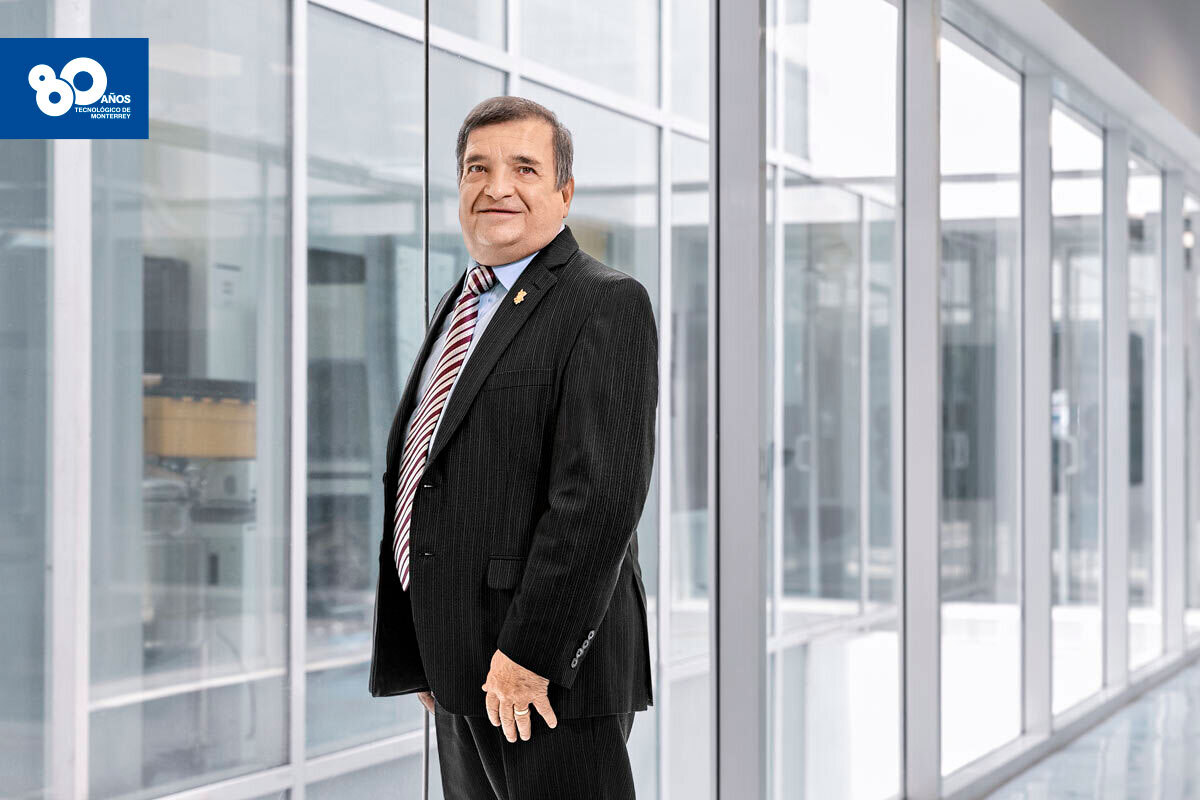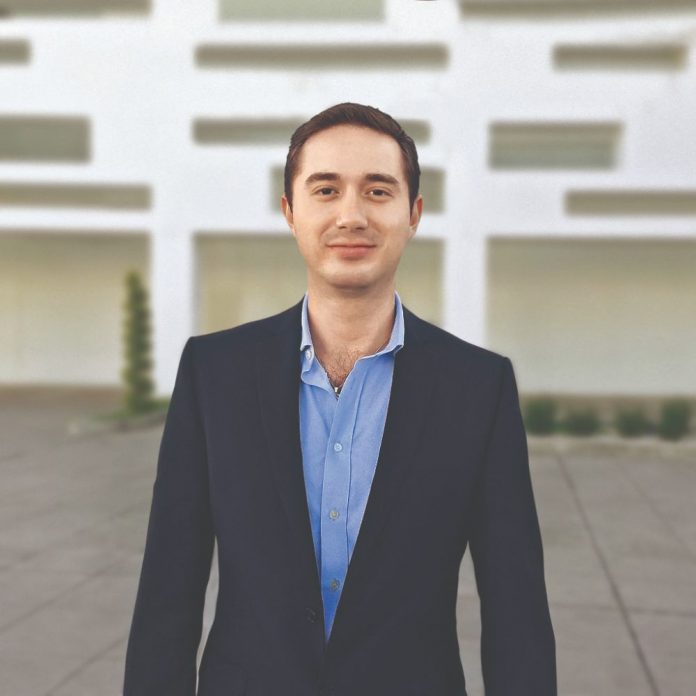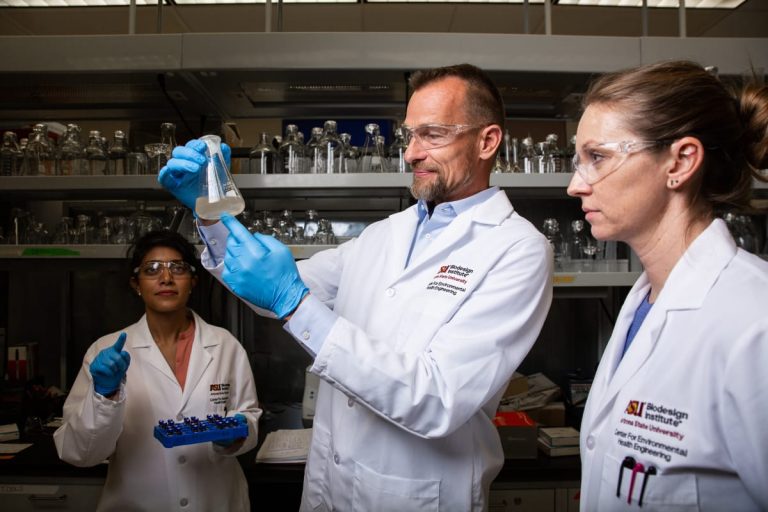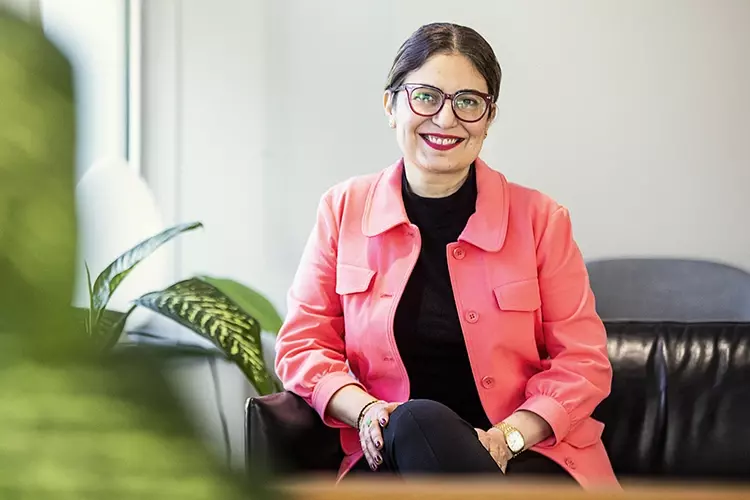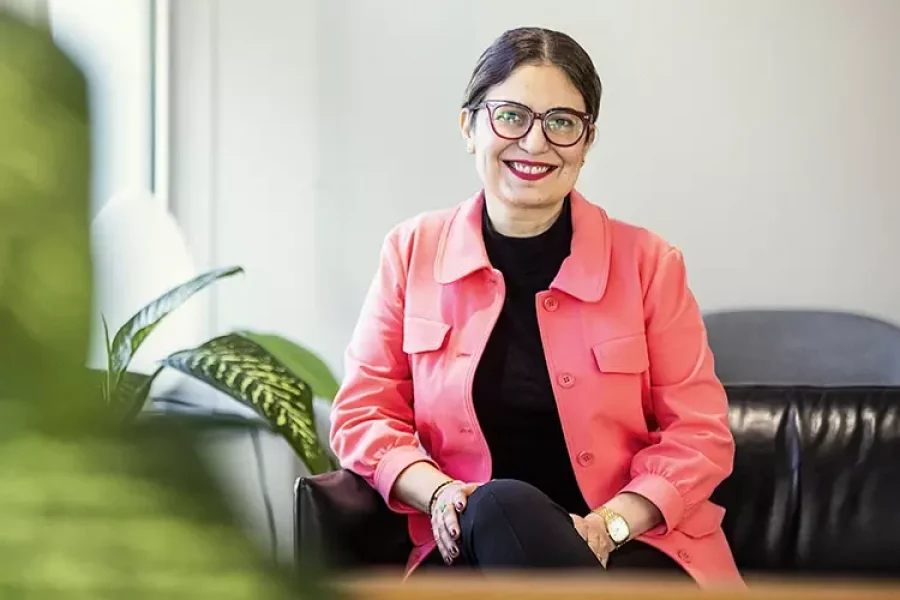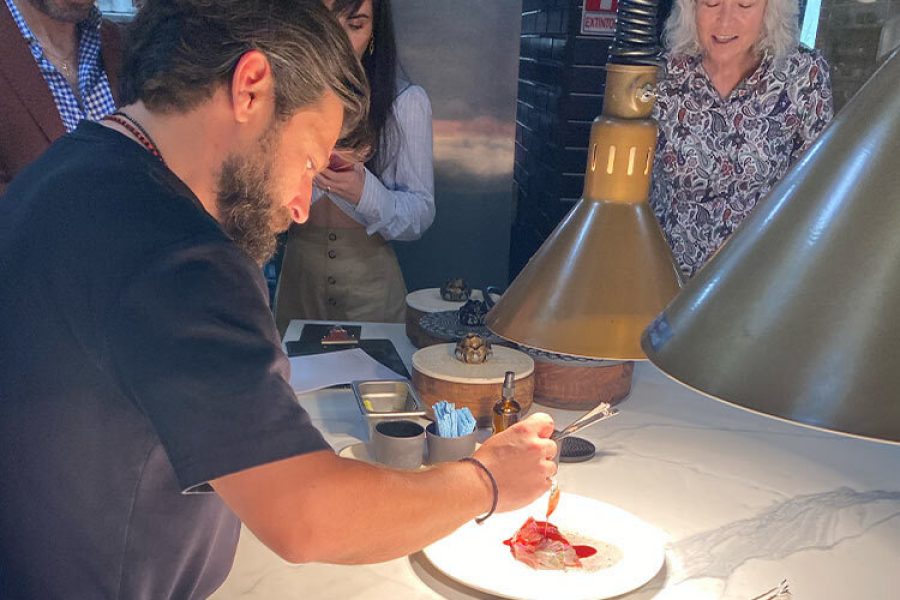Por Kenia Sánchez Maldonado
Although Sergio Serna always knew he wanted to follow the path of science, he realized over time that research implied a great responsibility.
Now, after 30 years of work and a few months away from retiring, he feels enormously proud of the researchers he has shaped, the books he has published, and above all because he has always looked for ways to provide people with a better diet.
As a graduate of the bachelor’s degree program in Agricultural Sciences and Animal Husbandry at Tec de Monterrey, with a master’s degree in Nutrition and a PhD in Food Engineering from Texas A&M University, his résumé is impressive, due to both his academic contributions and his collaborations with numerous national and international companies, as well as having published thirteen books, more than 200 articles, and being the man behind some of the Tec’s most important patents.
The motivation behind the science
Although I’ve arrived at the Femsa Biotechnology Center with 15 minutes to spare, Dr. Serna is already waiting for me impeccably dressed in a suit and tie. He jokes with some colleagues from the lab and takes a selfie with some students. His relaxed attitude is undoubtedly in sharp contrast to his teaching style, which is described as strict. He’s a professor who sets the bar very high for his students.
Once the interview gets underway, Serna Saldívar pays full attention, thinking long and hard about his answers. At no point does he get distracted by the hustle and bustle of the labs around us. What he definitely does get excited about is talking about the people who marked his career as a researcher. Before graduating from the Tec, he participated in a program tun by the World Food Programme. Due to that experience, he decided to continue studying for a master’s and PhD, this time at Texas A&M University. While there, he met professors Lloyd Rooney and Norman Borlaug (the latter having won the Nobel Peace Prize in 1970 for his contribution to agriculture, which enabled millions of lives to be saved from famine). This relationship made him decide to continue following the same path: seeking better foodstuffs for humanity, especially for the most disadvantaged.
What sparked your interest in science?
My mom and dad are doctors who worked all their lives in [the Mexican Institute of] Social Security. That really influenced me to go into the area of biology. However, my contact with Lloyd Rooney and Norman Borlaug made me decide to go into bioengineering.

What memories do you have from when you were younger?
I grew up in a time of many changes. Seeing the Americans land on the moon, the transition to a young, very spiritual world, to the world of the 1980s.
I always say that something which reflects those changes is how I wrote the thesis for my bachelor’s degree on a typewriter, the one for my master’s on a computer at Texas A&M University, and the one for my PhD on a personal computer.
You were out of the country for ten years, at Texas A&M University, and then you came back to Mexico. What made you decide to return?
When I was completing my PhD, an opportunity opened up for me to go to the University of Sonora to do some research. Back then, it was the only program in the country for studying post-harvest grain technology. Two years later, Dr. Rooney asked me to return to Texas A&M as a research professor. After that, we received a visit from some Tec executives, and the director of research told me they were starting to do some biotechnology research and asked if I’d be interested in going there. I accepted because I felt I could contribute more to my country. That’s how I became possibly the first formal researcher at the Tec in the 1990s.

One of your lines of research is the processing of cereals and extracting next-generation proteins…
I’m interested in this topic because you need a lot of inputs to make a kilo of meat, egg, or a liter of milk… Animals consume a lot of water, and they create methane. The next-generation protein project was born ten years ago with the goal of producing plant proteins that can substitute animals at a lower cost, without harming the environment as much, and without sacrificing nutritional value.
Most nutrition problems in children are due to a lack of good-quality protein. Plant protein is capable of reaching a greater number of people.
That’s very important in a country like Mexico.
Yes, because here we have the two specters of malnutrition: on the one hand, population groups who have protein-energy undernutrition, and on the other, obesity, which leads to chronic degenerative diseases. 66% of Mexicans die from metabolic syndrome conditions. So, the research being conducted on this topic has a major impact as it will improve people’s quality of life and life expectancy.

The responsibility of disseminating knowledge
Professor Saldívar has won National Recognition for Community Social Service from the Ministry of Social Development, the Yum Kax award from the National Congress of Nixtamalization, the Luis Elizondo award, and the Rómulo Garza award for Research and Innovation from Tec de Monterrey. He has also been awarded the National Biotechnology Prize and an honorary doctorate from the University of Sonora. However, what he is most proud of are the books he has written and the researchers he has shaped.
You’re a very prolific researcher.
I really like writing because I feel that is the best way to disseminate knowledge and it’s a tangible legacy. We have the responsibility to publish. Our research shouldn’t stay on our desks. While it’s true that articles and books to a greater extent take a lot of work, money, and effort, they’re definitely worthwhile because they can lead to breakthroughs.
I’m very satisfied with two books in particular: Cereal Grains: Properties, Processing, and Nutritional Attributes [Química, almacenamiento e industrialización de los cereales], the first book on cereals in Latin America, which was so successful that it was then translated into English and is still in use at some universities in the United States. The second is Corn Chemistry and Technology, the most important book on corn, technology, and processing.
What are the most gratifying experiences you’ve had over the course of your career as a researcher and an academic?
Contributing to improving people’s quality of life. For instance, we started a graduate program in Sonora on foodstuffs, chiefly grains, which is now a very successful program. In Brazil, I did a lot of research to develop meals for underprivileged children such as school meals based on cereals and pulses.
But what I’m most proud of is the legacy. Over the course of my academic career, I’ve shaped 70 master’s students and more than 20 PhD students, and I know that they in turn will shape many others and continue the lines of research that the Biotechnology Center is currently investigating. I’m inspired to think that although I might not see certain things such as therapies for combating cancer or diabetes without side effects, my students or their students will.
Serna says all of this with a broad smile, showing his profound appreciation for his students.

The evolution of research at the Tec
What can you say about the research currently being conducted at the Tec? The Tec’s research has exceeded my expectations and has grown exponentially. The seed we sowed has been multiplied “n” times. We’ve gone from not being recognized for research to being among the top 150 universities in the world.
The postdoctoral attraction program has been one of the best. Researchers can enhance their projects a lot if they have a Ph.D. student working exclusively on them.
To conduct effective research, you need to have good infrastructure, access to graduate students, and recruit professors with good credentials. I think that the Tec does those three things very well. What’s more, all of this strengthens the teaching process.
Do you think the Tec is up to the task of proposing solutions to the major challenges Mexicans and humanity in general are facing?
Absolutely! I think that of all the universities in Mexico, it’s doing the most grounded research, with the most social involvement, and helping industry directly.
What would you say is your most significant responsibility as a man of science?
Setting a good example, working hard, honestly, and for the good of the people. I still come to the lab at six in the morning to work side by side with other people. That’s setting an example and not just saying something for the sake of it.
You mention coming in at six in the morning with a lot of enthusiasm to continue the research, but who is Dr. Sergio Saldívar outside the classroom and the labs?
I’m a man of simple pleasures who enjoys spending time with his family. What I like doing is traveling and reading. I also really enjoy being in the garden, spending time with my kids, and oil painting. Now that I’m retiring and have a little more time, I’m thinking about living in Spain for a while, because I’m also a Spanish citizen.
What other plans do you have after retiring from the Tec’s classrooms?
I intend to continue contributing and supporting the industry. I have strong ties to the American Soybean Association, which has given me the opportunity to travel to many parts of the world as a consultant, so I’m going to continue doing that, but at a slower pace. Working day and night for forty years is beginning to take its toll.
